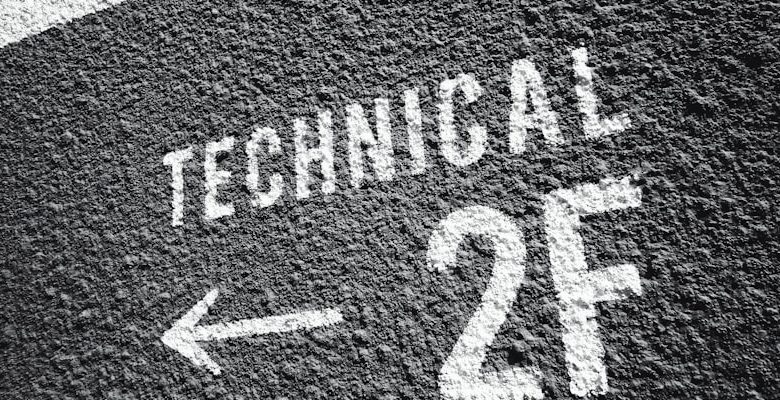The Role of Technical Analysis in Crypto Trading

- Understanding the basics of technical analysis
- Common technical indicators used in crypto trading
- How to interpret chart patterns in crypto trading
- The importance of support and resistance levels in technical analysis
- Using moving averages to make informed trading decisions
- Applying technical analysis to predict price movements in cryptocurrencies
Understanding the basics of technical analysis
Technical analysis is a method used by traders to evaluate and forecast the future price movements of assets based on historical data. In the context of crypto trading, technical analysis plays a crucial role in helping traders make informed decisions about when to buy or sell cryptocurrencies. By analyzing price charts and identifying patterns, trends, and key levels of support and resistance, traders can gain insights into the market dynamics and make more accurate predictions.
One of the basic principles of technical analysis is that price movements are not random and can be influenced by various factors such as market psychology, supply and demand, and external news events. By studying these factors and applying technical indicators such as moving averages, relative strength index (RSI), and Fibonacci retracement levels, traders can identify potential entry and exit points for their trades.
It is important to note that technical analysis is not a foolproof method and does not guarantee success in trading. However, by combining technical analysis with other fundamental and sentiment analysis techniques, traders can improve their overall trading strategy and increase their chances of making profitable trades in the crypto market.
Common technical indicators used in crypto trading
When it comes to analyzing cryptocurrency markets, there are several common technical indicators that traders use to make informed decisions. These indicators help traders identify trends, predict price movements, and determine potential entry and exit points for trades. Some of the most widely used technical indicators in crypto trading include moving averages, relative strength index (RSI), MACD (Moving Average Convergence Divergence), Bollinger Bands, and Fibonacci retracement levels.
Moving averages are one of the simplest and most effective technical indicators used in crypto trading. They help smooth out price data to identify trends over a specific period of time. Traders often use moving averages to determine the direction of the trend and to spot potential reversal points.
The relative strength index (RSI) is another popular technical indicator that measures the speed and change of price movements. RSI values range from 0 to 100, with values above 70 indicating an overbought condition and values below 30 indicating an oversold condition. Traders use the RSI to identify potential trend reversals and to confirm the strength of a current trend.
The MACD (Moving Average Convergence Divergence) is a trend-following momentum indicator that shows the relationship between two moving averages of an asset’s price. Traders use the MACD to identify changes in the strength, direction, momentum, and duration of a trend. The MACD generates buy and sell signals based on crossovers between its two lines.
Bollinger Bands are volatility indicators that consist of a simple moving average and two standard deviations plotted above and below the moving average. Traders use Bollinger Bands to identify overbought and oversold conditions and to anticipate potential trend reversals. When the price touches or crosses the upper band, it may indicate an overbought condition, while touching or crossing the lower band may indicate an oversold condition.
Fibonacci retracement levels are based on the mathematical relationships identified by mathematician Leonardo Fibonacci. Traders use Fibonacci retracement levels to identify potential support and resistance levels where the price of an asset may reverse direction. Fibonacci retracement levels are often used in conjunction with other technical indicators to confirm trading signals and make more informed decisions.
How to interpret chart patterns in crypto trading
When it comes to interpreting chart patterns in crypto trading, there are several key factors to consider. Chart patterns are formed by the price movements of a particular cryptocurrency over a certain period of time, and they can provide valuable insights into potential future price movements. By analyzing these patterns, traders can make more informed decisions about when to buy or sell.
One of the most common chart patterns in crypto trading is the head and shoulders pattern. This pattern typically indicates a reversal in the current trend, with the price reaching a peak (the head) before falling back down. Traders often look for this pattern as a signal to sell their holdings and potentially enter a short position.
Another important chart pattern to watch for is the symmetrical triangle. This pattern is formed by two converging trendlines, with the price moving in a series of lower highs and higher lows. When the price breaks out of this pattern, it can indicate a significant price movement in the direction of the breakout. Traders often use this pattern to help them set profit targets and stop-loss levels.
Overall, understanding how to interpret chart patterns in crypto trading is essential for success in the market. By analyzing these patterns and using them to inform your trading decisions, you can increase your chances of making profitable trades and minimizing potential losses. Remember to always combine technical analysis with other forms of analysis, such as fundamental analysis, to get a complete picture of the market.
The importance of support and resistance levels in technical analysis
Support and resistance levels play a crucial role in technical analysis when it comes to analyzing price movements in the cryptocurrency market. These levels are indicative of the points where the price tends to stop and reverse its direction. Support level acts as a floor for the price, preventing it from falling further, while resistance level acts as a ceiling, preventing the price from rising higher.
Identifying support and resistance levels can help traders make informed decisions about when to enter or exit a trade. When the price approaches a support level, it is often seen as a buying opportunity as there is a higher chance of the price bouncing back from that level. On the other hand, when the price approaches a resistance level, it may be a signal to sell as the price is likely to face selling pressure at that point.
By using technical analysis tools such as trend lines, moving averages, and chart patterns, traders can pinpoint these key levels on a price chart. Understanding the significance of support and resistance levels can provide valuable insights into market psychology and help traders anticipate potential price movements.
Overall, incorporating support and resistance levels into technical analysis can enhance a trader’s ability to make well-informed decisions in the volatile cryptocurrency market. By paying attention to these key levels, traders can better manage their risk and improve their overall trading performance.
Using moving averages to make informed trading decisions
One of the most popular technical analysis tools used by traders in the cryptocurrency market is moving averages. Moving averages help traders identify trends and potential entry and exit points for their trades. By analyzing the average price of an asset over a specific period of time, traders can gain insights into the direction in which the price is moving.
There are two main types of moving averages that traders use: simple moving averages (SMA) and exponential moving averages (EMA). SMA gives equal weight to all data points in the period being analyzed, while EMA gives more weight to recent data points. Traders often use a combination of both types of moving averages to get a more comprehensive view of the market.
Traders look for two main signals when using moving averages to make trading decisions. The first signal is a crossover, where a short-term moving average crosses above or below a long-term moving average. This crossover can indicate a change in trend and is often used as a signal to buy or sell an asset.
The second signal traders look for is support and resistance levels. When an asset’s price approaches a moving average and bounces off of it, that moving average can act as a level of support or resistance. Traders use these levels to determine where to place stop-loss orders and take-profit orders.
Applying technical analysis to predict price movements in cryptocurrencies
Applying technical analysis is a common practice among traders in the cryptocurrency market as it helps predict price movements based on historical data and market trends. By analyzing charts and indicators, investors can gain insights into potential price fluctuations and make more informed trading decisions.
One of the key principles of technical analysis is the idea that price movements are not entirely random but follow patterns that can be identified and used to forecast future price action. Traders use tools such as moving averages, RSI, MACD, and Bollinger Bands to analyze price data and identify buy or sell signals.
While technical analysis is not foolproof and cannot guarantee accurate predictions all the time, it can be a valuable tool in a trader’s arsenal. By combining technical analysis with fundamental analysis and market sentiment, investors can make more informed decisions and improve their overall trading performance in the cryptocurrency market.


